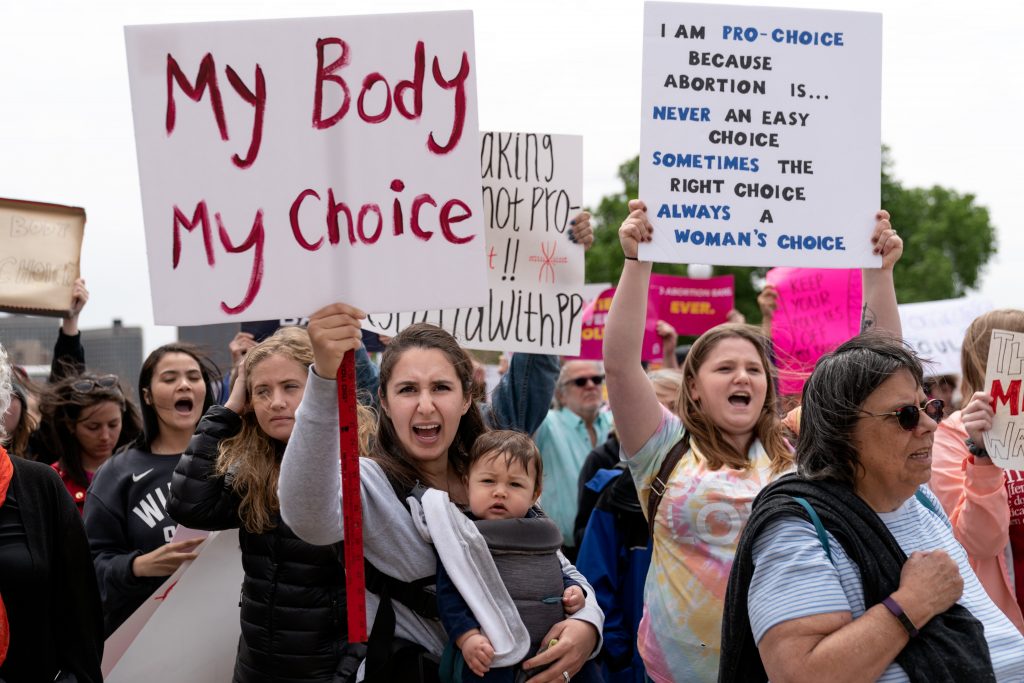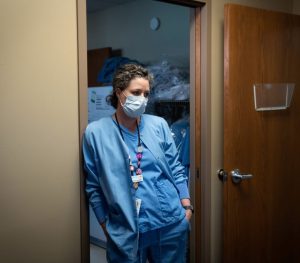The state has just one physician providing abortions: a doctor who travels from Minnesota every month. If Roe v. Wade is overturned, there will be none. BY SARAH LAHM MAY 5, 2022
Geography, wealth, and time. These are the three factors Dr. Sarah Traxler worries about most when it comes to who has, or will continue to have, access to safe abortions.
Most people in the United States who seek abortions live in poverty. In South Dakota, the poverty rate has risen substantially in recent years, while access to reproductive health care has been thwarted.
Dr. Traxler is an obstetrician-gynecologist who works primarily in Minnesota but also provides abortions in Sioux Falls, South Dakota. One week every month she travels to the state’s only Planned Parenthood clinic in Sioux Falls. Dr. Traxler is the sole physician providing this essential medical service in the entire state while in Sioux Falls.
Anyone who has ever traveled across South Dakota will understand what Dr. Traxler means about geography, wealth, and time being the key factors in access to abortion. Interstate 90 cuts through the middle of South Dakota, and it takes nearly five hours to move from one end of the state to the other. It’s not an easy journey in the best of times, let alone in the pursuit of an abortion.
Most people in the United States who seek abortions live in poverty, as documented by the Guttmacher Institute. In South Dakota, the poverty rate among adults and children has risen substantially in recent years, while access to reproductive health care has been thwarted.
Abortions are legal in South Dakota for now, but just barely. Before Dr. Traxler can provide medical care to a patient—and abortions are routine medical care—she must walk that patient through an excruciating list of questions that are designed to punish and elicit shame.
Star Tribune reporters Brianna Biersbach and Emma Nelson sat in Dr. Traxler’s office in Sioux Falls as she counseled patients before their scheduled ultrasounds and abortions. Among the questions the state of South Dakota requires her to ask are whether or not the patient would like to see the image of the ultrasound or receive a “detailed description of that image.”
Fortunately for her patients, Dr. Traxler is not much of a rule follower in this regard. She has to ask the questions, but tells the patients before her they can answer however they’d like. These patients, she says, already “sort of live in a post-Roe world,” where access to an abortion is severely restricted and controlled by the state.
The article documenting Dr. Traxler’s work came out on April 30, just days before a draft opinion on Roe v. Wade, written by U.S. Supreme Court Justice Samuel Alito, was leaked to the press. While the document is a draft, it is widely expected to become the blueprint that the majority of Justices will soon use to overturn Roe.
Minnesota is no bastion of free and unrestricted access, either, despite the constitutional protection in place.
If the U.S. Supreme Court does, in fact, overturn Roe, Dr. Traxler’s work in South Dakota would end immediately. That’s because South Dakota lawmakers anticipated this decision and put a “trigger law” in place in 2005.
This law, which is similar to those on the books in many GOP-controlled states, would completely outlaw abortion in the state, when and if the federal court strikes down Roe.
If Roe is overturned, South Dakotans would be stranded in a sea of red states, with Minnesota the closest option for many of them. Abortion was enshrined as a state constitutional right in Minnesota in 1995, making it much harder to ban.
Geography, wealth, and time would then become even greater barriers for South Dakotans seeking abortions. An interactive map from the Guttmacher Institute lays out this dire situation with shocking clarity. It shows that the loss of protection from Roe would lead to a dramatic jump—from 190,000 to 920,000—in the number of people for whom Minnesota would be the closest place to obtain an abortion.
Dr. Traxler could feasibly continue to provide abortions in Minnesota to people from restrictive states like South Dakota, unless South Dakota lawmakers decide to enact a vigilante law. These frightening pieces of legislation have been cascading through conservative states, particularly in the wake of the 2021 Texas decision allowing private citizens to target people and health care providers who either seek or perform an abortion.
Minnesota is no bastion of free and unrestricted access, either, despite the constitutional protection in place. Patients seeking an abortion are required to have a script regarding the procedure read to them, either over the phone or in person, before enduring a twenty-four-hour waiting period.
For the patients Dr. Traxler serves in South Dakota, however, it will likely become the only place they can get an abortion in the near future—provided that geography, wealth, and time are all on their side.
This article originally appeared in The Progressive at progressive.org.


